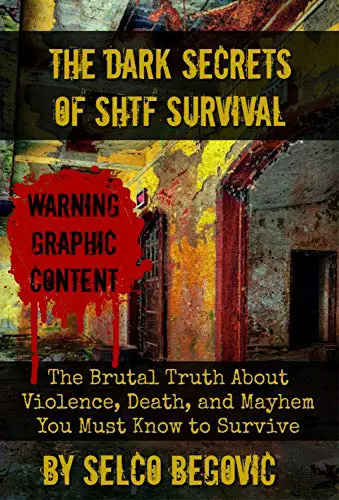Whether you think that the SHTF is just an idea that some people have, or a reality that can happen to everyone, you need to be prepared. That means having a plan for the future, and getting the supplies you need for the future.
GARBAGE is a threat during an extreme SHTF scenario
GARBAGE is one of the biggest threats during an extreme SHTF scenario. Aside from the usual suspects (trash, germs, disease, etc.), you also have to consider other people’s trash. For instance, did you know that rodents carry disease? Or that a buildup of unused trash can lead to toxic gases?
The fact of the matter is, in an extreme SHTF scenario, it’s important to be prepared. Having a plan and sticking to it will not only save you from catastrophe, it will allow you to be flexible in an emergency. You might be able to scavenge for food and supplies, but without proper sanitation, you may find yourself a victim of an infectious disease.
In addition to planning for the worst, you should consider the most likely scenarios. For example, if you’re in a rural area, you might not have access to electricity or water. You should also consider dividing up tasks appropriately. If you have a family, make sure everyone has his or her share of the work.
Of course, the most important part of your plan is getting your family to a safe place. The best way to accomplish this is to have a good “go bag” of essentials ready. If you have pets, you’ll want to keep them safe too. You should also consider how to secure your home. During an extreme SHTF scenario, your home could become an impromptu prison.
Preparing for evacuations
Getting ready for evacuations during SHTF survival is critical to the safety of your family. These events can happen at any time and present a variety of challenges. Having a plan for every possible situation is the best way to protect yourself.
If you live in an area that is prone to flooding or tornadoes, you will need to have a plan in place for when you have to leave your home. This means knowing what the evacuation routes are and what the expected storm strength is.
There are different preps needed for each type of evacuation. For example, you will need different supplies if you are preparing for a hurricane or a blizzard. You will also need a different transportation system.
One of the most important things you can do is to monitor your local news. Keeping up to date on your city’s situation will help you prepare for any potential SHTF scenario. You may need to contact a structural engineer to determine the safety of your property.
If you are living in a state where there is a heavy monsoon season, you will need to take steps to protect your property. In Arizona, monsoon season occurs from August to September. If you live in the Gulf Region, you will need to have a disaster plan in place.
You will also need to know what the evacuation routes are for the area you live in. Leaving your homestead for the open road is risky.
Having zero power means no way to heat or cool your home
Having zero power means no heat or cold for at least a day, or in some cases a week or more. The good news is that you can do something about it. There are a few nifty tricks you can use to get by until your utility company is able to turn your lights back on. It’s a good idea to prepare well in advance. You should stock up on batteries and flashlights as well as some light-duty insulators.
It’s a good idea to keep your family activities in one room or area, and to make sure you are not leaving the door unlocked. This is especially true if you have to make an emergency call in the middle of the night.
Having an SHTF plan ready
Having an SHTF plan ready for any scenario is an important step in preparing for a disaster. A good plan will help you survive and keep you and your family safe. However, a plan is only as good as the preparation you make for it.
First, you should consider your location and what types of natural disasters are likely to affect you. You should also consider your needs and the season you live in. This will help you determine the contents of your SHTF plan.
Next, you should write down a list of potential scenarios. These scenarios should include everything from what type of disaster to expect, to how the event will affect you and others in your area.
Once you’ve written down a list of possible scenarios, you can begin to formulate a plan to deal with each. This will include things like where you’ll stay, what you’ll do in the event of a disaster, and how you’ll get out of your location.
You should take a long look at the details of each of the scenarios on your list. Each one has different circumstances, so you’ll need to adapt your SHTF plan accordingly.
You should also decide if you’ll be evacuating, bugging out, or sheltering in place. If you’re planning to bug out, you should also have a plan for how you’ll communicate with your loved ones. You should also have essential supplies ready.
